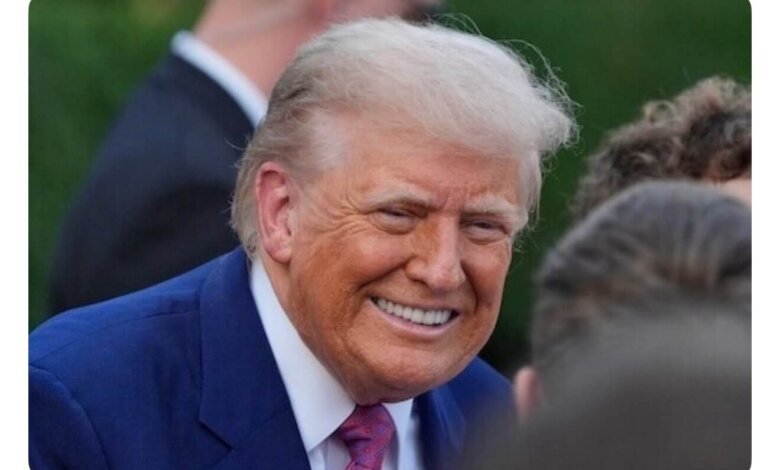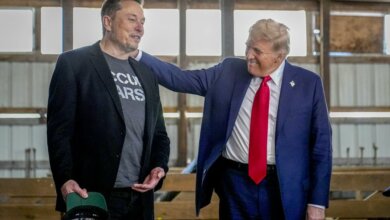U.S. Imposes 35% Tariff on Canadian Imports, Escalating Trade Tensions

NEW YORK: In a bold move that has reignited tensions between two of North America’s closest trading partners, U.S. President Donald Trump announced a 35% tariff on all Canadian goods entering the United States, effective August 1, 2025.
The decision, communicated via a letter to Canadian Prime Minister Mark Carney, marks a significant escalation in an ongoing trade dispute and threatens to disrupt the $761.7 billion bilateral trade relationship.
Citing issues like Canada’s alleged failure to curb fentanyl smuggling, high dairy tariffs, and a now-reversed digital services tax, the U.S. administration is pushing for a restructuring of trade dynamics, with potential ripple effects across global markets.
A New Chapter in U.S.-Canada Trade Friction
The announcement comes after months of strained negotiations, with the U.S. accusing Canada of unfair trade practices. President Trump has pointed to Canada’s 400% tariffs on U.S. dairy products as a long-standing grievance, arguing they harm American farmers. Additionally, the U.S. has linked the tariffs to national security concerns, claiming Canada’s lax border controls contribute to the flow of fentanyl into the United States. In his letter, Trump warned that any retaliatory measures from Canada would prompt an equivalent increase in U.S. tariffs, signaling a tit-for-tat approach that could spiral into a broader trade war.
The tariffs, which apply to all Canadian imports except those compliant with the U.S.-Mexico-Canada Agreement (USMCA), follow earlier levies imposed in March 2025, including a 50% tax on steel and aluminum and a 25% duty on vehicles and auto parts. Canada, the top buyer of U.S. exports with $349 billion in goods purchased last year, responded with its own retaliatory tariffs on U.S. steel, aluminum, and consumer goods. However, recent exemptions on Canadian tariffs for manufacturing inputs and health-related products have lowered their economic impact, according to Oxford Economics.
Roots of the Dispute
The latest tariffs stem from a breakdown in trade talks, exacerbated by Canada’s brief imposition of a 3% digital services tax on tech companies, including U.S. giants like Google and Amazon. The tax, approved in June 2024, was set to take effect in July 2025 but was rescinded on June 29 after Trump terminated trade discussions, calling it a “blatant attack” on American interests. Canada’s decision to drop the tax was hailed by the American Chamber of Commerce as a step toward repairing economic ties, but the new 35% tariff suggests the U.S. is unwilling to de-escalate.
President Trump has framed the tariffs as part of his “America First” trade policy, which aims to incentivize foreign companies to relocate manufacturing to the U.S. In his letter to Carney, he emphasized that Canadian firms building or manufacturing in the U.S. would be exempt from the tariffs, with streamlined approval processes promised. This approach aligns with broader U.S. trade actions, including a 50% tariff on copper imports and threats of 15–20% blanket tariffs on other trading partners like Japan, South Korea, and the European Union.
Economic and Political Implications
The tariffs pose significant risks for both nations. Canada, which exports $412.7 billion in goods annually to the U.S., faces a potential economic contraction. Oxford Economics estimates that even short-lived tariffs could erase two years of Canadian economic growth, pushing unemployment from 6.6% to 8%. The Ambassador Bridge, a critical trade corridor between Windsor and Detroit, underscores the deep integration of the two economies, making disruptions particularly painful.
For the U.S., the tariffs could backfire by raising costs for consumers and businesses reliant on Canadian imports, such as energy products (subject to a 10% tariff) and raw materials. The U.S. stock market experienced volatility following earlier tariff announcements, and analysts warn that sustained trade barriers could fuel inflation and disrupt supply chains.
Canadian Prime Minister Mark Carney, who campaigned on a platform of managing the trade war, has vowed to protect Canadian industries. While Canada initially imposed retaliatory tariffs, including a 50% surcharge on steel imports exceeding quotas, Carney’s government has signaled openness to negotiations. However, Trump’s threat to match any Canadian tariff increases has limited Ottawa’s leverage.
Global Context and Market Reactions
The U.S.-Canada tariff spat is part of a broader wave of protectionist policies. Trump has imposed 50% tariffs on Brazilian exports and 25% tariffs on Japanese and South Korean goods, while threatening additional levies on BRICS-aligned nations. The 50% copper tariff, announced earlier this week, has already driven New York futures 35% higher year-to-date, impacting industries from manufacturing to construction. Chilean miner Antofagasta sees an opportunity to revive its U.S. projects, highlighting how tariffs are reshaping global supply chains.
Market reactions have been mixed. COMEX copper futures fell 2.7% to $5.49 on July 9 after Trump’s tariff announcement, reflecting trader uncertainty. Meanwhile, posts on X indicate polarized sentiment, with some users supporting Trump’s hardline stance as a defense of U.S. interests, while others warn of economic fallout for both nations.
The U.S.-Canada trade relationship, governed by the USMCA since 2020, faces its most significant test yet. While some USMCA-compliant goods remain exempt, the blanket 35% tariff threatens to unravel decades of economic integration. Legal challenges also loom: in May 2025, the U.S. Court of International Trade ruled that Trump’s use of the International Emergency Economic Powers Act to impose “fentanyl-related” tariffs exceeded his authority, though the administration has appealed.
As the August 1 deadline approaches, businesses on both sides of the border are bracing for higher costs and supply chain disruptions. Canadian firms like Taurus Craco, which rely on cross-border trade, are struggling to plan amid the uncertainty. With Trump signaling no exemptions for retaliatory measures, the prospect of a full-blown trade war looms large, threatening the economic stability of North America’s largest trading partnership.




